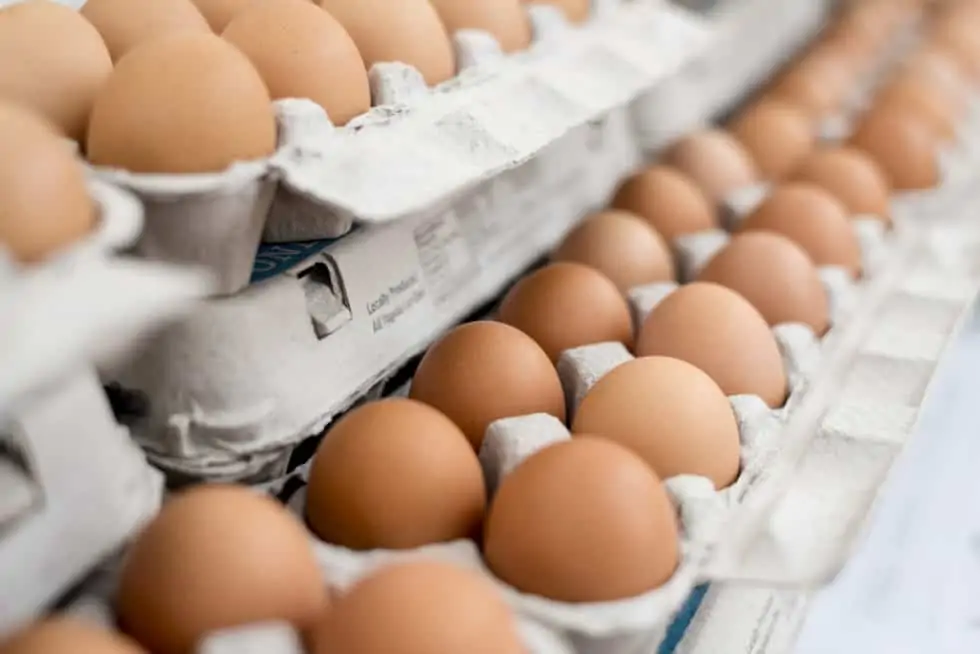On an egg carton, “cage free” means that the hens that laid the eggs were not raised in caged housing systems, which is how the vast majority of laying hens in the U.S. are housed. In a caged housing system, each hen is typically given enough space to stand upright, but not enough space to turn around, move around, or stretch her wings. The space given to each bird in a cage is typically less than the size of a sheet of paper. “Cage free” does not mean that the hens had access to the outdoors.
On a chicken label, the claim adds no value. Unlike for laying hens, it is not common industry practice to confine chickens raised for slaughter in cages.
What this claim means
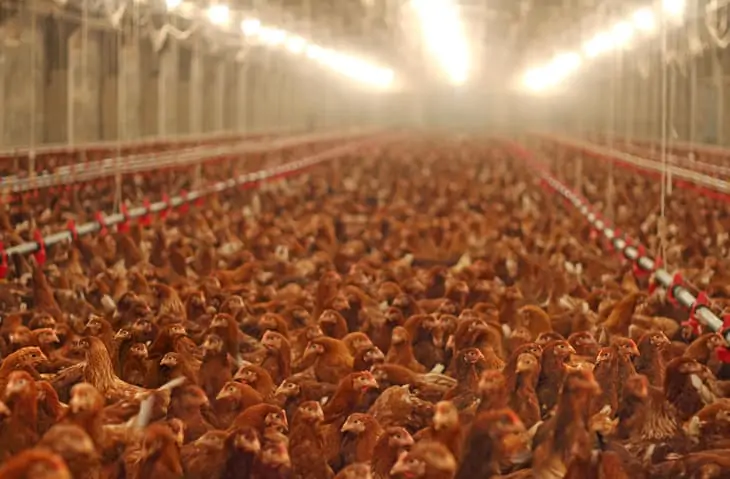
On an egg carton:
A “cage free” claim on an egg carton label means that the hens were not confined in cages. It does not mean that the hens had access to the outdoors. Hen houses that confine laying hens in small cages have been the preferred method of housing in the egg industry since the 1960s. According to a 2016 estimate by the United Egg Producers, the industry trade group for egg producers, 90.1% of the laying hens in the U.S. are caged, and caged hens produce approximately 94% of commercial eggs in the U.S. In a caged housing system, laying hens are granted just enough space to stand upright, but not enough space to stretch wings or move around. The industry standard for space per bird in a cage is generally slightly more than 8 inches by 8 inches – that’s less than the size of a sheet of paper.
On a chicken label:
A “cage free” claim on chicken adds no value; meat chickens are not raised in cages, but in large, open structures known as “growout houses.” Meat chicken houses typically house tens of thousands of birds and grant less than a square foot of space per bird (approximately 10.5 inches by 11 inches per bird).
Right: Laying hens in a cage-free house. “Cage free” does not mean that the hens were given access to the outdoors.
Why it matters
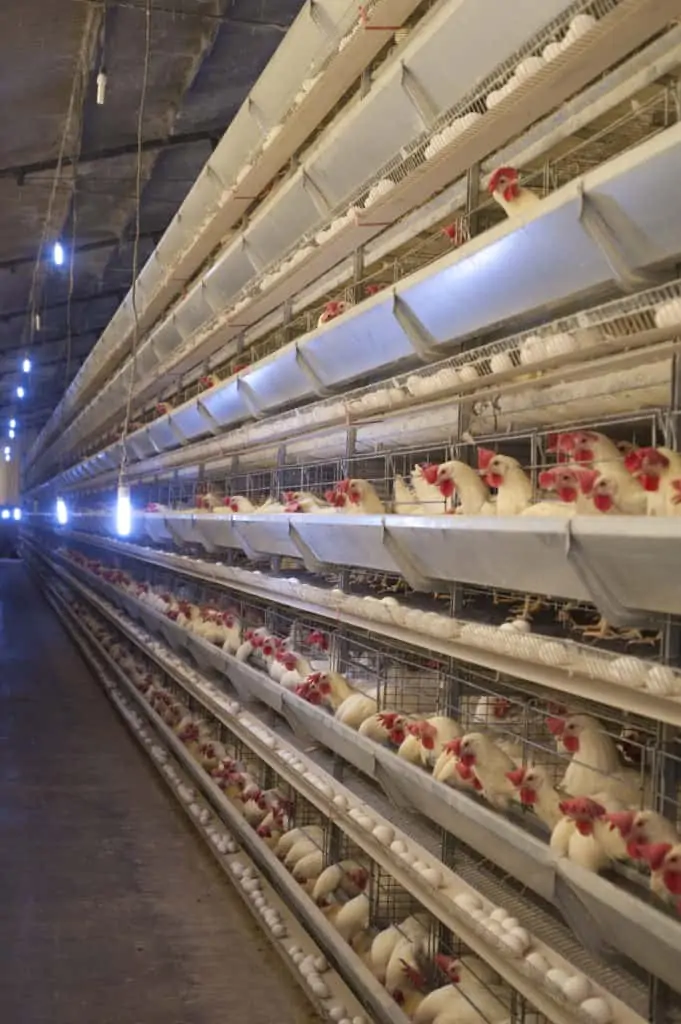
It is important to look for eggs from hens that were not raised in traditional cages. Conventional cages do not provide hens with enough space to move around, or with scratching areas, dust baths, perches and nest boxes, which means hens are not able to engage in natural behaviors such as foraging, dust bathing, perching and nesting.
Left: Laying hens housed in conventional cages.
Is the claim verified?
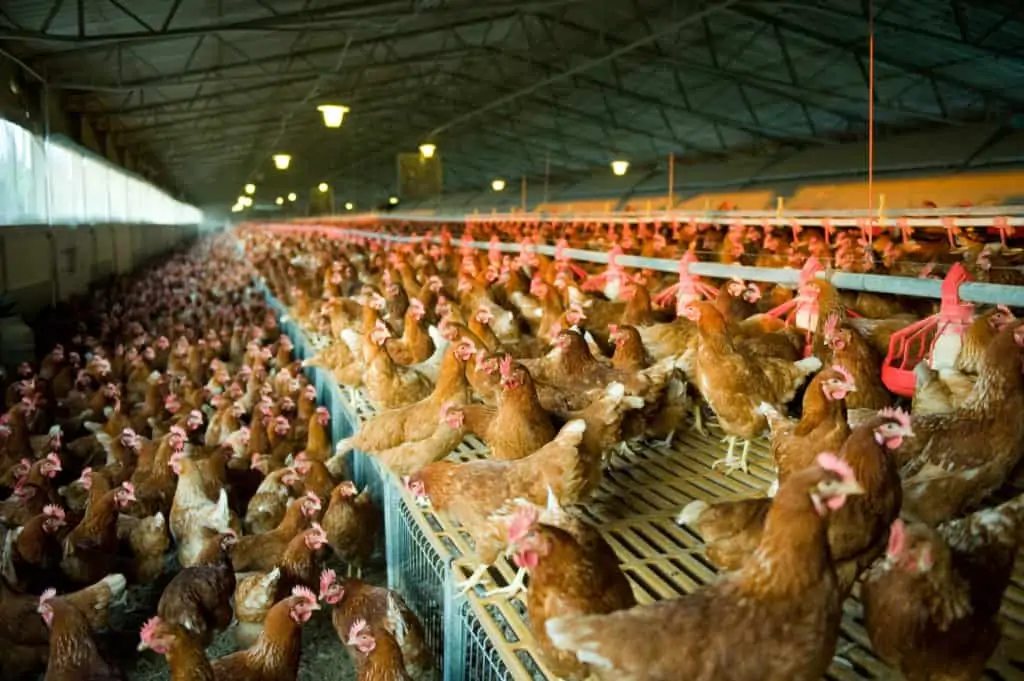
Sometimes.
Eggs. Labels on egg cartons are regulated by the Food and Drug Administration (FDA), and do not need prior approval by the agency. The FDA requires that food labels be truthful and not misleading, but has no regulatory definition of “cage free” on egg carton labels.
However, if an egg carton has a U.S. Grademark (USDA Grade shield), the U.S. Department of Agriculture’s Agricultural Marketing Service (AMS) verifies claims such as “cage free.” Approximately half of shell eggs produced in the U.S. are officially graded by the USDA.
Chicken. On chicken labels, the “cage free” labeling claim is allowed, even though the claim adds no value because meat chickens are not raised in cages. The claim can even be verified through the USDA Process Verified Program, which includes a desk audit and on-farm inspection. Even when the claim on chicken is verified, it still adds no value.
What additional information tells you the claim has been verified?
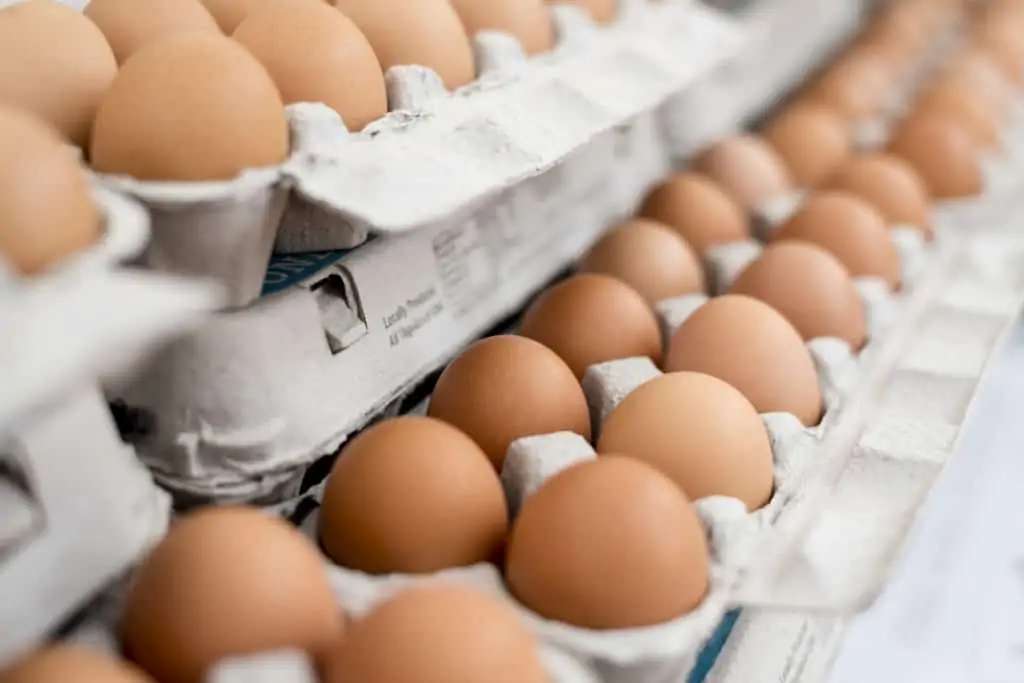
On the label of an egg carton, the following seals or shields mean that the “cage free” claim has been verified:
USDA Organic
Eggs labeled “organic” are always cage-free. The USDA Organic seal is meaningful and verified.
USDA Grademark (Grade AA, Grade A)
Producers can choose to have their eggs graded by the U.S. Department of Agriculture (e.g., Grade AA, Grade A). Eggs packed under the grading program are eligible to carry the USDA grademark and are subject to additional labeling requirements. Eggs graded by the USDA can be labeled “USDA Grade A” or “USDA Grade AA,” and carry the U.S. Grademark seal. Verification for eggs with the USDA Grademark Shield includes on-site visits twice annually to confirm cage free flock capacity at the production facilities (farms), and also verify proper identification and traceability at the packing facility. The different grades (Grade AA, Grade A and Grade B) describe differences in the quality of the egg, including the shell (Grade AA and Grade A egg shells must be clean and unbroken), the air cell, egg white and egg yolk. There are no differences between grades in terms of requirements for how the chickens are raised or handled.
Animal Welfare Approved
The Animal Welfare Approved label is highly meaningful and verified. The standards prohibit the use of all cages for laying hens.
Certified Humane by Humane Farm Animal Care (HFAC)
The Certified Humane Raised and Handled label is verified. The standards prohibit the use of all cages for laying hens.
American Humane Certified + “Free Range
The American Humane Certified label on its own does not mean that the chickens were not raised in cages, since the standards allow for enriched colony houses, which have cages (the cages are enriched and can be opened during the day). If the claim “free range” or “pasture-raised” appears on the label along with the American Humane Certified seal, it means that the laying hens were not confined in cages and had access to outdoor range or pasture.
